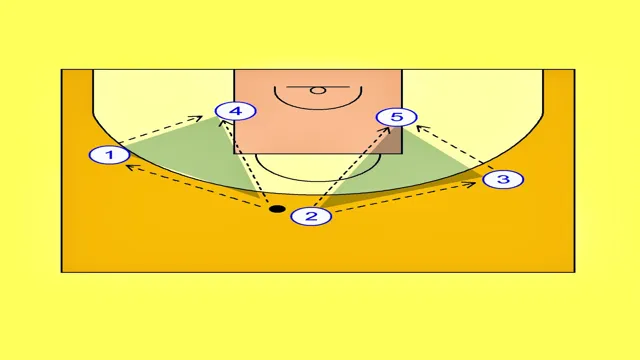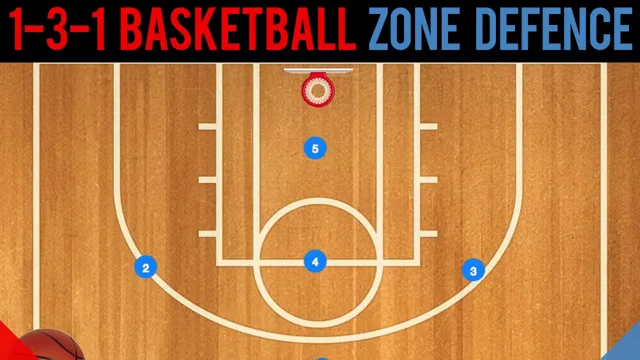When it comes to basketball, learning how to master your transitions between offense and defense is crucial to your success on the court. Whether you’re a coach looking to improve your team’s strategies or a player hoping to elevate your skills, understanding the ins and outs of transition offense can give you a competitive edge. But what exactly is transition offense? Simply put, it’s the way that a team moves the ball up the court after a defensive rebound or turnover.
It’s a fast-paced, dynamic style of play that requires quick thinking, precision passing, and excellent teamwork. Mastering basketball transition offense is no easy feat. It takes practice, dedication, and a willingness to learn from your mistakes.
But with the right strategies in place, you can begin to build a winning mindset and dominate on the court. In this blog, we’ll cover some of the most important tips and techniques for mastering basketball transition offense. From breaking down your opponent’s defense to improving your ball handling skills, we’ll give you the tools you need to take your game to the next level.
So let’s dive in and start building that winning mindset today!
What is Transition Offense
Basketball transition offense refers to a team’s strategy to quickly move the ball up the court after a defensive rebound, steal, or turnover. The primary goal is to score before the opposing team has a chance to fully set up their defense. Players typically sprint up the court, trying to find openings in the defense to either drive to the basket or shoot from beyond the arc.
This style of play requires quick thinking, excellent communication, and sharp passes to execute effectively. A successful transition offense can catch the opposing team off-guard, leading to easy points and momentum swings. However, it also involves a high level of risk, and if not executed well, can result in turnovers and missed shots.
Overall, a well-executed transition offense can make any basketball team into a formidable and exciting force to watch.
The Basics of Transition Offense
Transition Offense Transition offense is a basketball strategy where a team quickly moves the ball up the court after gaining possession, with the goal of scoring before the opposing team’s defense has a chance to set up. It requires quick decision making, teamwork, and physical conditioning. Players must be able to read the defense, pass accurately, and finish at the rim or shoot from the perimeter.
Transition offense is often used by teams with a fast-paced playing style or when they want to exploit the weaknesses of a slower opponent. A well-executed transition offense can result in easy baskets and demoralize the opposing team. However, it can also lead to turnovers and low-percentage shots if not done effectively.
Overall, transition offense is an exciting and dynamic aspect of basketball that requires skill, strategy, and athleticism.

Advantages of Using Transition Offense
Transition offense is a basketball strategy that involves quickly moving the ball up the court after a turnover or defensive rebound to score before the opposing team can set up their defense. This strategy has several advantages that can benefit a team during a game. Firstly, transition offense allows for more scoring opportunities as the defense is not fully set up and can be caught off guard.
This can lead to easier layups, dunks, or open shots. Secondly, it allows for higher shooting percentages as the opposing team has less time to contest shots. Additionally, transition offense can create more excitement and energy for the team and fans, leading to a more enjoyable experience for everyone involved.
Overall, utilizing transition offense can be a powerful tool for a basketball team looking to gain an edge in a game.
How to Implement Transition Offense
If you’re a basketball coach looking to improve your team’s offensive game, implementing a transition offense can be a great way to increase your scoring opportunities. Transition offense is all about quickly moving the ball up the court and making quick decisions to catch the defense off guard. To start, prioritize conditioning and speed during practices to ensure your players are physically prepared for a fast-paced game style.
Teach your team to make quick outlet passes to teammates once they secure a rebound or turnover. Encourage players to push the ball up the court using passes and dribbling, and to look for fast break opportunities before the defense has a chance to set up. It’s also important to have a system in place for players to know their roles and positions in the transition offense.
By practicing these strategies and consistently emphasizing a transition mindset, your team can become a scoring machine on the court.
Training and Drills for Transition Offense
Transition offense is all about speed and coordination, but it requires detailed planning and practice to execute effectively. One of the best ways to implement this strategy is by working on specific drills and training exercises that highlight the key skills needed to make it work. For example, you can practice fast break scenarios that involve quick passes and aggressive moves to get to the basket.
Other drills might focus on improving communication and team chemistry during fast-paced situations. It’s important to keep in mind that transition offense is about seizing opportunities and making quick decisions. By practicing these scenarios in a controlled environment, players can be better prepared to execute when it really counts.
So whether you’re coaching a high school team or training for a pickup game, you can improve your transition offense by incorporating drills and training exercises designed to build speed, coordination, and teamwork.
Breaking Down the Opponent’s Defense in Transition
Transition offense is an effective way to break down the opponent’s defense and get easy baskets in basketball. To implement this strategy, the first step is to get the rebound or steal and immediately run the ball up the court before the defense can set up. A key element of transition offense is spacing, making sure the players are spread out to create openings for drives and passes.
It’s also crucial to communicate and make quick decisions, whether it’s driving to the basket, passing to an open teammate, or pulling up for a jump shot. A good transition offense can catch the defense off guard and lead to high-percentage scoring opportunities. By mastering this tactic, a team can become a more lethal offensive force and dominate in fast-paced games.
Effective Fast Breaks in Transition
Transition offense is all about quickness and agility. It requires a lot of practice to perfect, but once it is mastered, it can be a game-changer. Effective fast breaks in transition require a lot of coordination between the players.
The key to transitioning successfully is to move the ball quickly up the court while maintaining control. It’s crucial to understand the defensive positioning and strategy in order to break their defense. One way to be effective in transitioning is to keep the ball moving and have players take opportunistic shots.
This requires good communication between teammates and being aware of the positions of their opponents. By implementing transition offense strategies, teams can catch their opponents off guard and make some quick points in the game. It’s all about recognizing the right moments to take the opportunity and execute the plan to perfection.
Common Mistakes to Avoid
When it comes to basketball, transition offense is a crucial aspect of the game. However, many teams make mistakes that can cost them points or even the game. One common mistake is not having a plan or strategy for transitioning from defense to offense.
Without a plan, players can become disorganized and fail to take advantage of fast break opportunities. Another mistake is not properly spacing the court and utilizing all available lanes. This can lead to congestion and turnovers, as well as missed opportunities for easy shots or layups.
Additionally, players may not communicate effectively during the transition, leading to confusion and missed passes. To avoid these mistakes, teams should practice their transition offense and have a clear plan in place. Proper spacing and communication are also key factors in executing a successful transition offense.
By avoiding these common mistakes, teams can increase their chances of scoring and winning games.
Forcing the Fast Break
Forcing the fast break can be an effective strategy in basketball, but it’s important to avoid common mistakes that can sabotage your efforts. One mistake is not having a clear plan in place for executing the fast break. Without proper organization, players may end up running into each other or taking inefficient routes down the court.
Another mistake is not properly conditioning players for fast-paced gameplay. The fast break requires quick sprints up and down the court, and players may struggle if they are not properly trained for this level of intensity. Finally, trying to force the fast break all the time can lead to turnovers and missed opportunities.
It’s important to read the game and recognize when it’s appropriate to push the pace and when it’s better to slow down and set up a play. By avoiding these mistakes and being strategic with your fast break efforts, you can take advantage of quick scoring opportunities and gain an edge over your opponents.
Poor Floor Spacing and Movement
When it comes to designing a space, poor floor spacing and movement can be a serious issue. If you don’t create enough space for people to move around comfortably, it can lead to frustration, accidents, and a general feeling of claustrophobia. One common mistake is to underestimate how much space people need, particularly if you’re dealing with a crowd.
Another mistake is failing to plan for traffic flow, in which case people may bump into each other or run into obstacles. Additionally, having furniture or decor that is too large for a space can make it feel cramped and uncomfortable. To avoid these issues, it’s important to carefully consider the needs of the space and the people who will be using it.
One way to do this is to create a mock-up of the space or use a floor planning tool to help you visualize how the space will function. By doing this, you can ensure that you’ve created a functional, comfortable space that people can move around in easily.
Conclusion and Next Steps
In conclusion, basketball transition offense is like a dance. It requires coordination, quick thinking, and a smooth flow from one movement to the next. It’s all about staying one step ahead of your opponent, anticipating their moves and strategically positioning your team to score.
So the next time you hit the court, remember that basketball isn’t just a game – it’s a choreographed masterpiece. So, lace up your shoes, get in formation, and let’s dance our way to victory!”
FAQs
What is basketball transition offense?
Basketball transition offense is a fast-paced offensive strategy utilized by a team to score quickly after gaining possession of the ball, while the opposing team is still transitioning from defense to offense.
How can a team implement basketball transition offense effectively?
To implement basketball transition offense effectively, a team must have quick and skilled players who can move the ball quickly up the court, while also being able to make accurate passes and shots.
What are some common plays used in basketball transition offense?
Some common plays used in basketball transition offense include the fast break, where a team races up the court to catch the defense off-guard, and the secondary break, where a team runs a set play once they’ve passed the ball beyond half-court.
What are some strategies for defending against basketball transition offense?
To defend against basketball transition offense, a team should prioritize getting back quickly on defense to prevent the opposing team from making easy baskets. Additionally, a team can employ a full-court press or zone defense to slow down the offensive team’s progress up the court.


